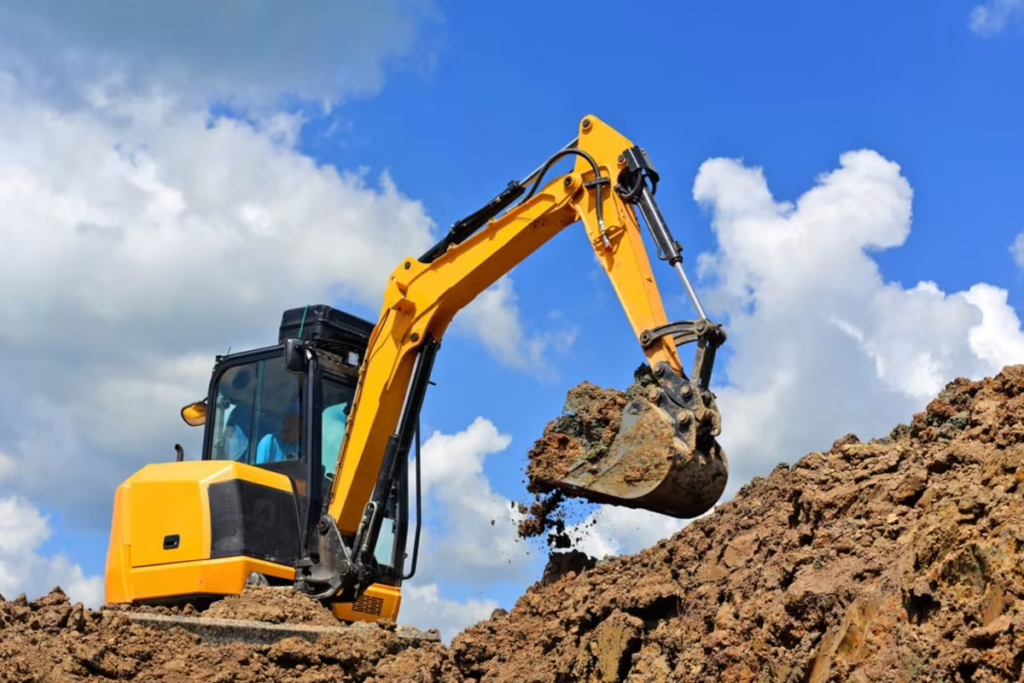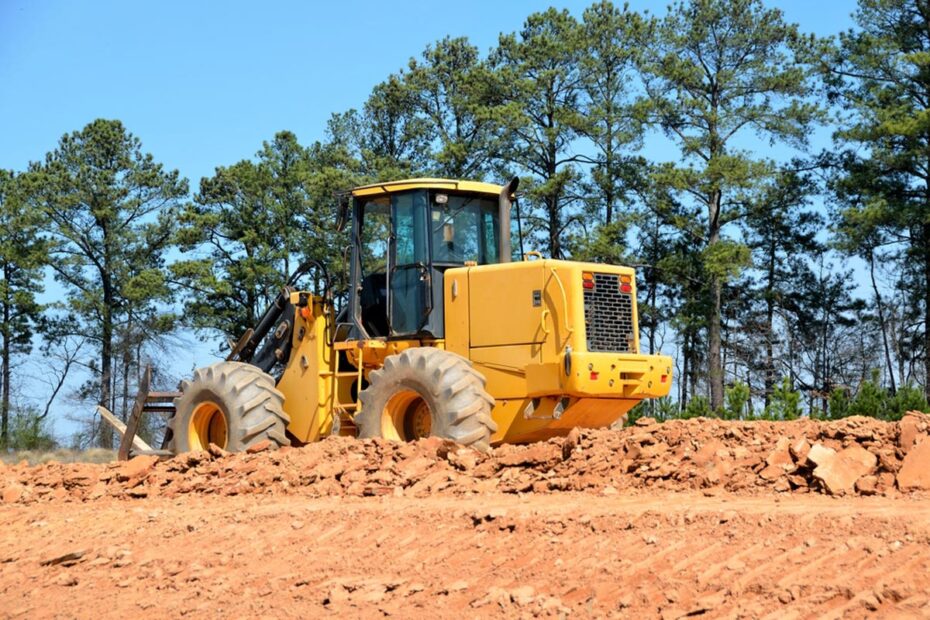Land clearing is an essential part of many construction and development projects. It involves the removal and disposal of trees, shrubs, stumps, and other vegetation from a specific area. Whether you are planning to build a new home, create a commercial space, or embark on an infrastructure project, understanding land clearing services is crucial for successful implementation. In this article, we will discuss the definition of land clearing, the importance of professional land clearing, different types of land clearing services, the land clearing process, and factors influencing the cost of these services.
Understanding Land Clearing Services
Moreover, professional land clearing near me offer a range of benefits beyond just vegetation removal. They can help in land grading, erosion control, and even land restoration efforts. By employing experts in the field, you can ensure that your land clearing project is not only done efficiently but also with a focus on long-term sustainability and environmental conservation.
Definition of Land Clearing
Land clearing refers to the process of removing trees, vegetation, and other obstacles from a designated area. This process prepares the land for construction, development, or agricultural purposes. Depending on the project requirements, land clearing may involve the removal of trees, shrubs, stumps, rocks, and other natural or man-made features. Learn more about agricultural at https://en.wikipedia.org/wiki/Agricultural_education#:~:text=Agricultural%20education%20is%20the%20systematic,as%20well%20as%20the%20management
Land clearing is a crucial step in various industries, including real estate development, infrastructure projects, and agricultural ventures. By creating a clean slate, land clearing allows for proper planning and utilization of the space. It also helps in reducing the risk of wildfires and improving overall land management practices.
Importance of Professional Land Clearing
Professional land clearing services are vital as they ensure efficient and safe removal of vegetation without causing damage or negatively impacting the environment. Experienced land clearing experts have the knowledge, skills, and equipment to complete the job in a timely manner while adhering to local regulations and environmental standards. They can also provide valuable guidance and advice on the best approach for your specific needs.

Types of Land Clearing Services
Land clearing services encompass a variety of tasks aimed at transforming overgrown or wooded areas into usable spaces. From creating clear pathways to preparing land for development, these services play a crucial role in land management and improvement. In addition to the common services like brush removal, stump grinding, and lot clearing, there are several other specialized techniques that professionals employ to meet specific land clearing needs.
Brush Removal
Brush removal is one of the most fundamental types of land clearing services. It involves the meticulous removal of small to medium-sized shrubs, vines, and undergrowth that can impede progress on a piece of land. By utilizing specialized machinery such as brush cutters and mulchers, professionals can efficiently clear large areas while ensuring minimal impact on the surrounding environment. Beyond enhancing the aesthetic appeal of the land, brush removal is essential for creating safe pathways, reducing fire hazards, and promoting healthy vegetation growth. Click here to learn more about reducing fire hazards.
Stump Grinding and Removal
After trees are felled, stumps can remain as stubborn reminders of the past, posing obstacles to new landscaping plans. Stump grinding and removal services address this issue by employing heavy-duty machinery to grind stumps into mulch or extract them entirely from the ground. This process not only eliminates eyesores but also facilitates smooth, level terrain for future landscaping projects. By eradicating trip hazards and creating a clean slate, stump grinding and removal contribute to the overall safety and functionality of the cleared area.
Lot Clearing
Lot clearing stands as a comprehensive solution for transforming raw land into a blank canvas ready for development. This service involves the systematic removal of trees, vegetation, and debris from a designated lot or parcel of land. In addition to clearing the existing vegetation, lot clearing often includes tasks such as grading the land for optimal construction conditions and establishing proper drainage systems to prevent water-related issues. By preparing the land thoroughly, lot clearing sets the stage for various projects, whether it be building construction, agricultural endeavors, or landscape design.
The Land Clearing Process
Initial Consultation and Site Assessment
Before any land clearing work begins, it is important to have an initial consultation with a professional land clearing service provider. This consultation serves as a crucial first step in the process, allowing the experts to gain a comprehensive understanding of the project requirements. During this stage, the experienced professionals will meticulously assess the site, taking into account factors such as terrain, existing vegetation, and any potential obstacles. By conducting a thorough site assessment, they can tailor their approach to meet the specific needs of the project, ensuring a successful outcome.
Furthermore, the initial consultation is an opportunity for the land clearing specialists to collaborate closely with the client. By actively listening to the client’s goals and preferences, the experts can provide valuable insights and recommendations. This collaborative approach helps establish clear communication channels and fosters a productive working relationship from the outset. Additionally, during this phase, the professionals will outline the various land clearing methods and equipment options available, highlighting the benefits of each approach to enable informed decision-making.
Clearing and Grubbing
The clearing and grubbing phase is a critical stage in the land clearing process, involving the meticulous removal of trees, shrubs, and other vegetation from the site. This phase encompasses a range of tasks, including the precise cutting down of trees, the strategic uprooting of stumps, the thorough clearing of brush, and the efficient removal of any debris that may impede construction or development activities. Skilled operators proficiently maneuver heavy machinery, such as excavators and bulldozers, to execute these tasks with precision and efficiency, ensuring the designated area is cleared thoroughly and effectively.
Moreover, the clearing and grubbing phase requires a keen eye for detail and a commitment to environmental stewardship. The professionals prioritize sustainable practices and adhere to industry regulations to minimize the environmental impact of the clearing process. By employing best practices in land clearing, such as selective clearing techniques and erosion control measures, the experts strive to preserve the ecological integrity of the surrounding area while achieving the project’s objectives.
Debris Removal and Disposal
Following the completion of the clearing and grubbing phase, the next crucial step is the removal and disposal of debris. This phase involves the efficient handling and disposal of all cleared materials, including vegetation, logs, stumps, and any other debris generated during the land clearing process. The professionals meticulously manage the debris removal process, ensuring that all materials are transported to designated disposal sites for recycling or environmentally friendly disposal.
Furthermore, the debris removal and disposal phase underscores the commitment of land clearing experts to responsible environmental practices. By prioritizing proper waste management and disposal techniques, the professionals contribute to sustainability efforts and ecosystem preservation. Through meticulous planning and execution, they ensure that the cleared site is left clean, free of debris, and primed for the next phase of development or construction.

Factors Influencing the Cost of Land Clearing Services
Size of the Land
The size of the land to be cleared is a significant factor in determining the cost of land clearing services. Larger areas will require more time, resources, and manpower to complete the job. Complex terrain and slopes can also affect the overall cost.
For example, imagine a vast expanse of land, stretching as far as the eye can see. The sheer magnitude of the task at hand becomes apparent as you envision the countless trees, shrubs, and vegetation that need to be cleared. It’s a monumental undertaking that requires meticulous planning and the right equipment to ensure a thorough and efficient job.
Furthermore, when dealing with hilly or uneven terrain, additional precautions must be taken to ensure the safety of the workers and the integrity of the land. The cost of implementing these safety measures and navigating challenging landscapes can add to the overall expense of the land clearing project.
Type of Vegetation
The type and density of vegetation present on the land can influence the cost of land clearing services. Thickly wooded areas with mature trees or dense undergrowth will require more effort and specialized equipment to remove. The disposal of certain types of vegetation may also incur additional fees, depending on local regulations.
Consider a scenario where the land is densely populated with towering trees, their branches reaching towards the sky like nature’s skyscrapers. Removing these majestic giants requires skillful arborists armed with powerful chainsaws and heavy machinery. The precision and expertise needed to safely fell these trees, while minimizing damage to the surrounding environment, adds to the complexity and cost of the land clearing process.
Furthermore, the disposal of the cleared vegetation must be done in accordance with local regulations. In some areas, certain types of vegetation may be considered invasive or protected, requiring special permits and procedures for their removal. These additional considerations can contribute to the overall cost of land clearing services.
Accessibility of the Site
The accessibility of the site plays a role in determining the cost of land clearing services. If the area is difficult to reach or has limited access for heavy machinery, additional time and effort may be required to complete the clearing process. This can impact the overall cost and timeline of the project.
Imagine a remote piece of land nestled deep within a dense forest, far away from any paved roads or infrastructure. The logistical challenges of transporting heavy machinery and equipment to this secluded location are not to be underestimated. The need for specialized vehicles and the coordination of logistics can significantly increase the cost of land clearing services.
Furthermore, if the site has limited access due to narrow pathways or environmental restrictions, alternative methods of clearing may need to be employed. This could involve manual labor or the use of smaller, more maneuverable equipment, which may require more time and effort to complete the job. These additional considerations can impact the overall cost and timeline of the land clearing project.By understanding the definition of land clearing, the importance of professional services, the various types of land clearing services available, the land clearing process, and factors that influence the cost of these services, you can better prepare for any land clearing project. It is crucial to engage experienced and reputable land clearing service providers to ensure the job is done efficiently, safely, and within your budget. With comprehensive land clearing services near you, you can confidently embark on your next construction or development endeavor.
Other resources: Arbor Pride Quality Arborist Services for Your Tree Care Needs
